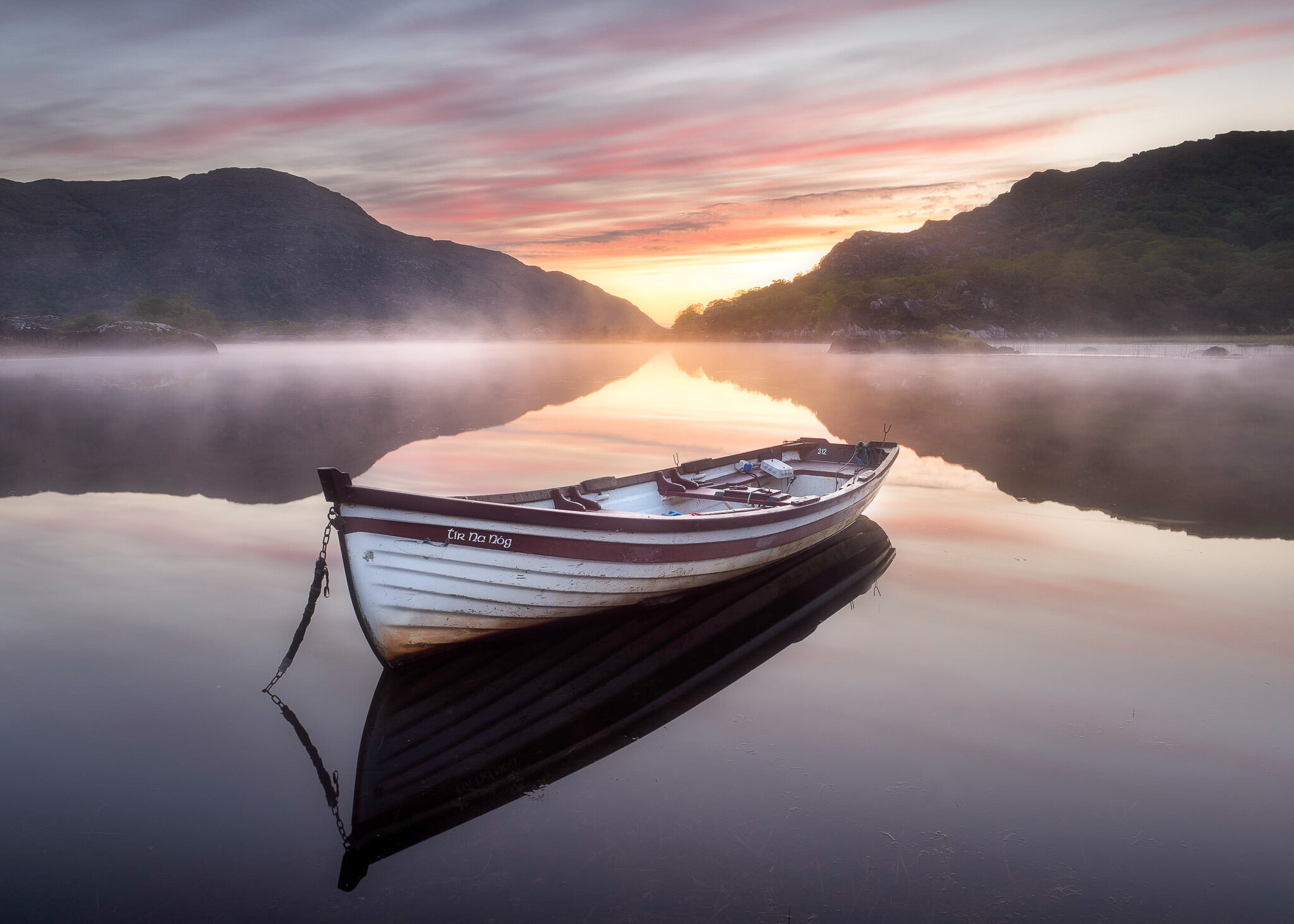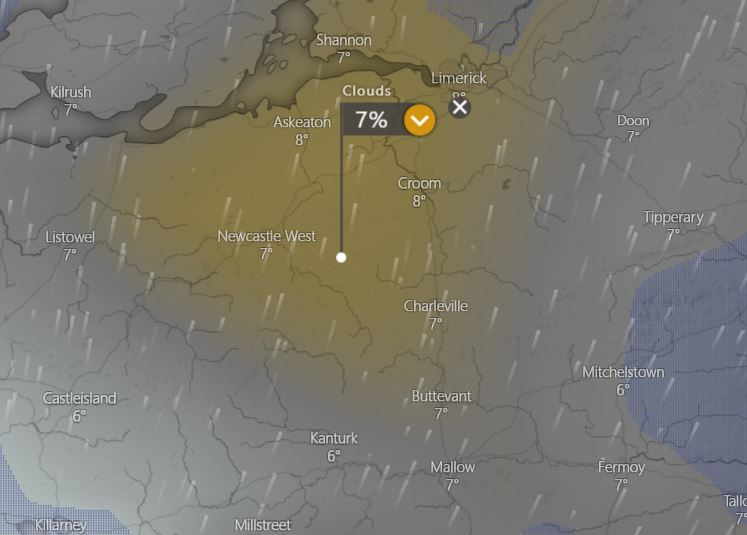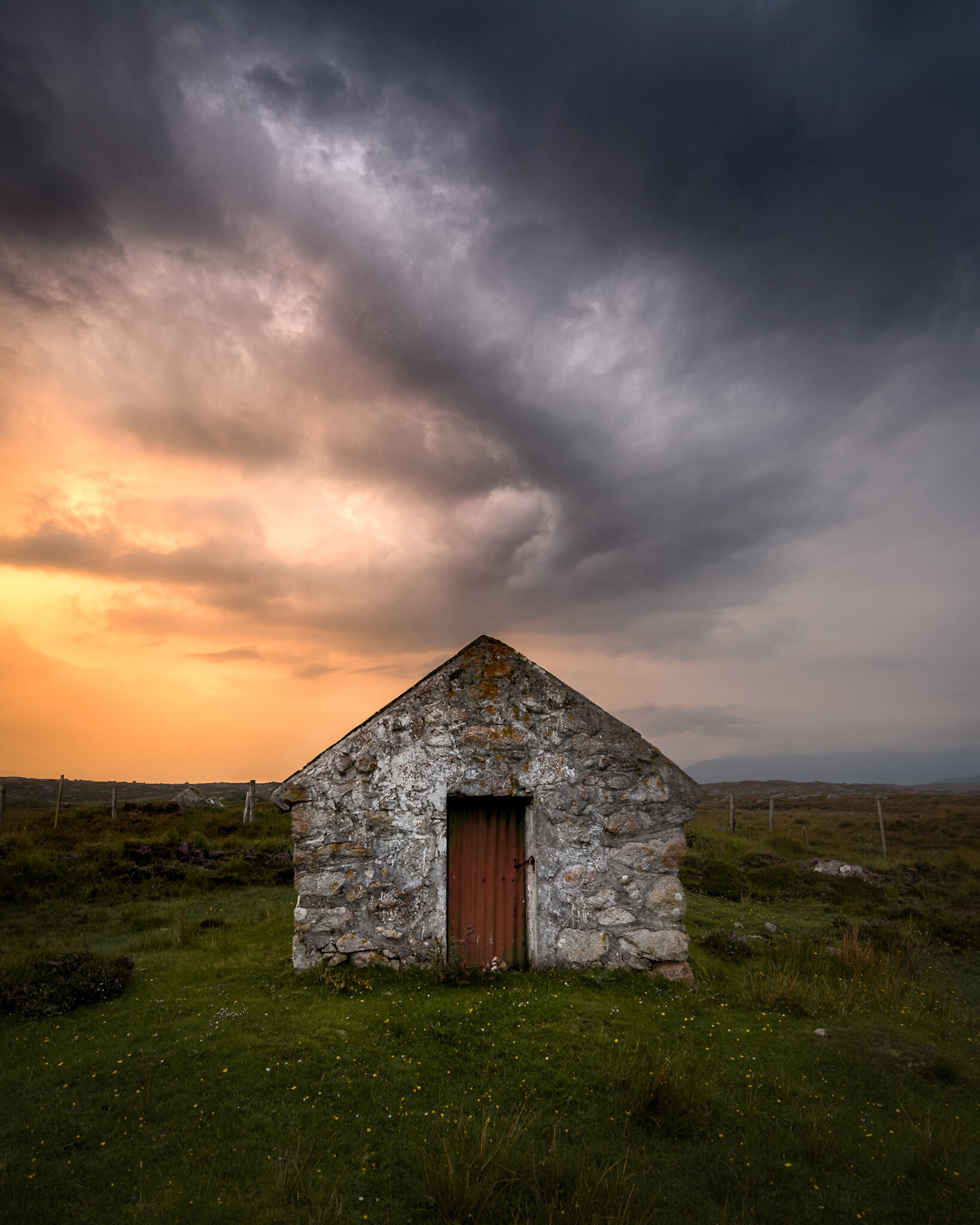Predicting a good sunrise/sunset (and a bit of help from Mother Nature)
‘The Fairy Tree’ A pink sunrise in The Burren, Co Clare
2024 Update: This blog post is an old one but the principles and ideas I discuss still apply. Some of the website layouts have changed but all the features I discuss here are still available and they have gotten ever better. In terms of reliability, I would chose Windy and YR. Clear outside is very good for Fog. Ventusky would be last on my list. Enjoy the read! *If this article helped you in any way and you enjoyed it please consider supporting me via the donation link below. Thank you!
Also, I am blown away by the number of readers this blog gets each month! I wrote this some time ago, but the concepts and principles still stay the same. Thanks for reading
I have gotten heaps of questions in the past few weeks about how to predict whether or not the sky is going to be colorful at sunrise and sunset and how I have gotten lucky on a number of occasions. Is it all luck? Absolutely not. Am I a weather man? No! Can you learn how to do it? Yes!
It is simply a case of over time I studied different weather systems and cloud heights etc and i began to see patterns. I get it wrong a lot of the time , trust me. However in this blog I will share some of the patterns i have seen, some of my tips and the apps/websites I use to help predict a decent sunrise/sunset. Now there are times when all rules and predictions go out the window and out of nowhere a sky can just explode! For now, however, let’s pretend that the rules are always right and these are the tools you need to predict a good show! Right, lets jump in.
Cloud Height- the most important factor!
There are 3 levels of cloud:
1) Low
2) Middle
3) High
Technically speaking middle and high cloud are your friends when it comes to getting a colorful sky. I do not know exactly why but as the sun dips below the horizon at sunset and there is no low cloud present, then the underneath of that middle and high cloud will catch the light. If there is low cloud present you may get some nice light as the sun is setting itself but afterwards the light will die (More about the optimum times to see a colorful sky in a minute). So middle and high cloud are what you want to get that decent color in the sky and nice light. As I said earlier that rule can sometimes not be true and you will get nice light in different conditions but generally that is the way it is 80-90% of the time. Images below were captured when there was a decent amount of middle and high cloud and very little low cloud
A sunset on Benvoy beach, this was just as the sun set: Note the more yellow/golden color
This image on the left was a sunset captured on the copper coast in Waterford. There was actually a lot of hazy low cloud present that day and I was full sure the sky would not play ball so I was shooting majority of my images with a strong foreground interest that was catching the golden light. However as the sun set I could see the horizon clear and that middle cloud just caught the light. Absolutely stunning!
You can get some very nice images on a day when there is broken low and middle cloud, particularly those god rays shooting out of the clouds, this can be a spectacular sight and is definitely an opportunity to grab a shot you will remember! So do not be discouraged if you see low cloud, there is still a shot to be had , just perhaps not solely at sunrise/sunset! The image below was taken at mid day.
A pano image showing some fantastic god rays shooting out from the low cloud over the mountains
Optimum Color times
What I call the ‘Optimum Color Times’ or OCT is basically the time in which the best color will come in the sky at sunrise or sunset. This is very easy to remember and understand so have no fear. So imagine we are in an ideal scenario, you are out for sunrise/sunset and we have splendid middle and high cloud and not a smidgen of low cloud. Here we go
Sunset: The best time to get that color is roughly 15-20 minutes AFTER the sun has gone below the horizon! Yes you heard me, the minute you see that sun disappear don’t you dare pack up that tripod and leave, you will regret it as I have done before and nearly cried as I was driving down the road and the sky exploded above me! After the sun has set, just wait and you will see that color come alive, for whatever reason I do not know but this is a pattern I have noticed and it is true.
Sunrise: The OCT for sunrise is 10-15 minutes BEFORE the sun rises. Notice the pattern? For both sunrise and sunset the OCT is when the sun is below the horizon and has not technically rose yet. Particularly for sunrises in ideal conditions the best color tends to come at least 10 minutes before the sun comes up. So it is really important to arrive on location for sunrise at least an hour before the sun is due to rise, get set up, find your composition and prepare for the show. After you have grabbed your colorful sky, there may be a shot where you can get that beautiful golden hour glow hitting a foreground subject or area so again do not pack up early, sunrise is my most favourite time to shoot.
Pre dawn calm before a wet day. Taken in Killarney, Co Kerry.
Ok so we have covered the cloud heights and the best times to see a colorful sky after and before sunrise. Now i am going to look at two weather apps I use to predict the cloud height. For this next section bear in mind what I said: middle and high clouds are your friends.
Windy.com and Yr.no
The golden hour can produce some spectacular images
https://www.yr.no/place/Ireland/
The above websites are my go to for getting cloud height predictions. I particularly love windy.com because of the level of detail it provides. So let me briefly show you how they work.
Windy.com:
Windy is a radar based website (also an android and ios app) which gives everything from temperature to wind to visibility to cloud cover etc. We are only concerned with cloud cover. You could go into other factors such as pressure systems and wind etc but we are not meteorologists its hard enough to get your head around this as it is!
So this is what you are greeted with on the windy.com home screen
Note the panel on the right hand side
This panel is your go to. Click on the clouds tab and you will see a drop drown menu showing low cloud, visibility, fog and cloud base. Toggling through the different options will produce different images on the map.
When you click on the LOW CLOUD tab you are likely to see a lot of white on the screen and perhaps a yellow/mustard color over the countries.
Low cloud map over Ireland at the time of writing this
The grey areas is low cloud, the blue areas is thick low cloud and rain. The yellow/mustard color is clearer conditions with little low cloud. By clicking on an area you can also get a % of low cloud and dragging the pin over whatever area you please is a great way to get the % of low cloud across the map. See below
So that is the low cloud tab. Now click on the CLOUD BASE tab, you are likely to see some color on the screen, if your lucky it will be green! Green represents middle to high cloud. There is a color scale in the bottom right hand corner of the screen which illustrates the color to cloud height relationship.
You can set the cloud height units in meters or feet, I leave it in feet. So now we are being presented with the actually height of the cloud base, if it is green it would be ranging from anything between 10,000 and 25,000 feet. Middle cloud is generally 4-6000 feet, from what I have observed anyways.
The best way to use this website is to identify the area you are going for sunset/sunrise. Now firstly:
Check the low cloud radar, if you see that yellow/mustard color over the area then there is very little low cloud present, just to make sure click on the area and you will see the drop pin give you the reading
Next, click on your cloud base and see if there is middle to high cloud present over that area. If its green your good to go!
after that it is hope for the best! I find windy quite accurate, it has gotten it wrong at times but that is to be expected. No device or computer can 100% predict what mother nature is going to do.
So take this example: I want to head to Ballybunion, Co Kerry for sunset tomorrow. Firstly I check the low cloud in that location:
Ok so we have 17% low cloud, not a lot, may be on for some nice light. Next i will check the cloud base itself
So we are looking at 7400 feet. Middle cloud, that is good and the possibility of some nice light catching the underneath of those clouds at sunset.
And that is it, you make a decision based on this information from windy.com.
I also use www.yr.no .
This website gives you cloud % of low, middle and high cloud arranged in three handy columns. Here is how you access this information
Log onto the website and type in the location you want to check
Sometimes Yr will not have the exact location you are looking for so type in somewhere near it and you will generally get an accurate reading for your desired location. For example when I typed in Ballybunion, nothing came up. But when I tried Ballyheigue, which is a beach 20 minutes down the road then it recognised the location, just a small note on that. So here is what you will be presented with:
Next click on the HOUR BY HOUR tab. This will bring you into an hourly breakdown of the weather. From there you are going to click on DETAILED.
What Yr does is it gives you a breakdown of the cloud % in three columns which you can see on the right hand side. This information is very handy and if you see a high % for middle and high cloud then there is a great chance of a nice sky at sunrise/sunset, given there is no low cloud %. YR also gives you humidity readings which can be good for predicting fog and mist, I wrote another blog about that which you can check out here
Scroll down to the time of sunset and check the cloud cover. I use Yr in conjunction with windy, I find windy the more accurate but when the two of them are singing off the same hymn sheet then generally they are correct!
Cloud % for today’s sunset
So those are the two apps/websites I use for my predictions. The windy app is good to use on a mobile device, the Yr app does not seem to give the cloud percentages for some reason so just go onto your mobile browser and access the website that way, just might be hard to see on a small screen.
Are these sites always right? of course not. But it is an excellent place to start. I am going to finish up this blog with a couple of observations I have made simply by experiencing various sunrises and sunsets and weather systems.
2022 Update: A quick note on Ventusky. Ventusky is another website with a similar interface to Windy.com. The panel is on the left hand side and you have the option of seeing a multitude of weather detail including cloud height (low, middle and high). I use it in conjunction with windy to see If both websites are more or less predicting the same.
Pay attention to the weather!
This was arguably the best sunset of that scorching summer we got in 2018 and luckily i was there to capture it. The next day was again roasting hot, which i think was the reason for this fantastic color in the sky. This was looking across to the blaskets from Dunquin Pier in Co Kerry.
I assume you have heard of the saying “Red sky at night, sheppard’s delight. Red sky in the morning, sheppard’s warning”, that is often accurate. If you are out for sunset and the next day is given dry and fine, with the optimum cloud height, you will be in for a show.
For sunrise, I have noticed that if the day which follows a sunrise is going to be wet and miserable weather then you will see a fantastic sky in the morning, Again given the right conditions as I had below on the copper coast one morning
A sunrise which was followed by a day of wet and windy weather. Location: Ballydowane Beach, Waterford
My favourite time to shoot is sunrise. You generally have the location to yourself and in my experience the best color has come at sunrise. Maybe that is because I live in Ireland and we get a lot of rainy weather! Anyone who tells you that you are always lucky to capture colorful skies and that the weather must love you, politely tell them you take the time and effort to study the patterns in the weather, cloud height and that it is YOU who puts yourself in the right place at the right time, with a little bit of luck.
Side note:
This was the end of a day filled with gale force winds, hail, thunder and rain showers!
Often times , after a day of rain and the light breaks through you can get some fantastic contrast and color in the sky. I think it has something to do with the barometric pressure in the atmosphere and the moisture in the air (I could be completely wrong there!). A day of broken cloud, showers and sunshine can be some of my favourite conditions to photograph in with rainbows and storm clouds bringing a whole new life to the landscape and some fantastic dramatic images!
So don’t be put off by the not so ideal cloud conditions, this blog is solely focusing on sunrise and sunset.
Another day of rain showers and thunderstorms, if these coincide with the golden hour you often get dramatic skies
So that is it folks, I think I have covered everything I wanted to cover. I hope it was not too confusing and that you have learned a thing or two about using cloud height and weather to predict a decent sunrise/sunset. Please do not hesitate to drop me a question in the comments or contact me through email/social media etc. I have covered this topic in an upcoming vlog also so stay tuned for that on my youtube.
I would love to see the sunrises/sunsets you capture using this information so send them on via DM on Instagram!
Thanks for reading and happy shooting
Sean
If this article helped you in any way and you enjoyed it please consider supporting me via the donation link below. Thank you :-)























